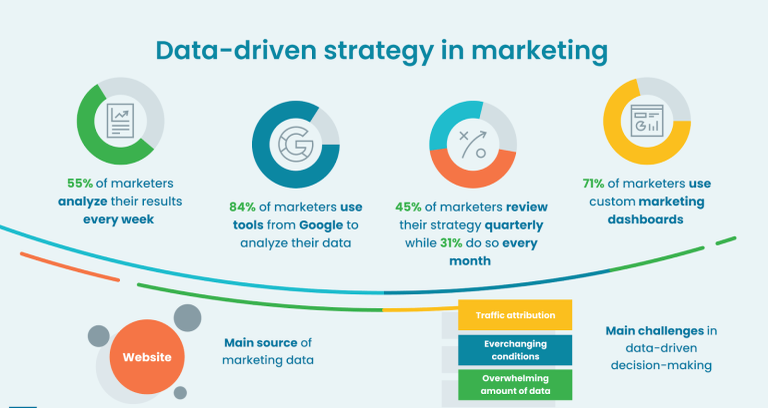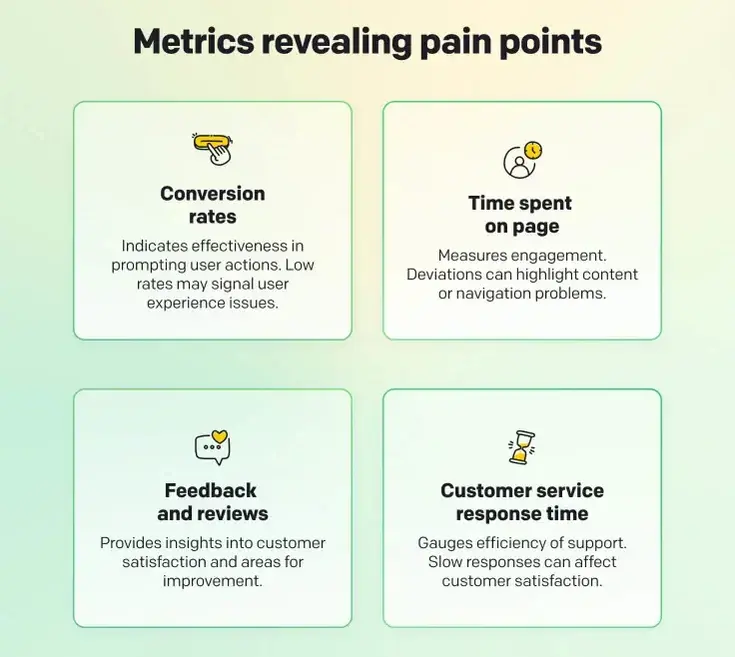The Problem with Vanity Metrics
When it comes to digital marketing, businesses often find themselves drowning in a sea of data. From traffic numbers to social media shares, there’s no shortage of metrics that can be tracked. However, not all metrics are created equal. Too many businesses focus on vanity metrics that look good on paper but don’t contribute to their bottom line. In fact, tracking the wrong metrics can lead to poor decision-making, wasted resources, and missed opportunities.
We’ll explore why vanity metrics aren’t helping your business, and how to shift your focus to ROI-driven metrics that truly matter. By the end, you’ll have a clearer understanding of which KPIs (Key Performance Indicators) can help you measure the success of your marketing efforts, make data-driven decisions, and ultimately improve your bottom line.
Understanding Vanity Metrics and Why They Mislead
What Are Vanity Metrics?
Vanity metrics are numbers that may look impressive at first glance but don’t provide valuable insights into the effectiveness of your marketing efforts. They are often easy to measure and showcase in reports but fail to align with business objectives or contribute to long-term growth. Common examples of vanity metrics include:
- Website Traffic: While high traffic may seem like a good thing, it doesn’t always correlate with sales or lead generation. What’s more important is whether that traffic is qualified and likely to convert.
- Social Media Followers: A large social media following looks impressive, but if those followers aren’t engaging with your posts or driving traffic to your website, they don’t add much value.
- Page Views: While more page views might suggest your content is being consumed, it doesn’t tell you whether those visitors are taking meaningful actions, such as signing up for a newsletter or making a purchase.
Why Vanity Metrics Are Dangerous
Relying on vanity metrics can lead businesses down a misleading path. Here’s why:
- False Sense of Security: You may think you’re doing well because certain metrics are high, even if they aren’t driving revenue.
- Wasted Resources: Spending money on tactics to increase vanity metrics (e.g., paid social media followers or boosting unqualified traffic) can drain your marketing budget without producing tangible results.
- Lack of Focus on Business Objectives: Vanity metrics don’t tie directly to your company’s goals, such as generating leads, increasing sales, or improving customer retention.

The Metrics That Actually Matter for ROI
To achieve meaningful results in your marketing campaigns, it’s essential to track metrics that align with your business goals. These metrics provide actionable insights into the performance of your marketing strategy and can help you improve ROI.
1. Customer Acquisition Cost (CAC)
One of the most crucial metrics for any business is Customer Acquisition Cost (CAC). This measures how much you spend to acquire a new customer. To calculate CAC, divide your total marketing and sales expenses by the number of new customers acquired over a specific period.
Why It Matters: Understanding CAC helps you determine the profitability of your marketing efforts. If the cost of acquiring customers is too high, you may need to adjust your strategies to ensure you’re spending your marketing budget wisely.
2. Lifetime Value (LTV)
Lifetime Value (LTV) refers to the total revenue a customer generates for your business during their entire relationship with you. By tracking LTV, you can determine how much to invest in acquiring customers while still maintaining profitability.
Why It Matters: LTV helps you understand the long-term value of each customer. It allows you to focus not just on short-term conversions, but on building relationships that will continue to bring in revenue over time.
3. Conversion Rate
Your conversion rate is the percentage of visitors to your website who complete a desired action, such as making a purchase, signing up for a newsletter, or downloading a resource. To calculate your conversion rate, divide the number of conversions by the total number of visitors, then multiply by 100.
Why It Matters: The conversion rate tells you how effectively your website or landing page is turning visitors into leads or customers. A high conversion rate generally indicates that your marketing message is resonating with the right audience.
4. Return on Investment (ROI)
The ultimate metric for measuring the success of any marketing effort is ROI. ROI tracks the profitability of your marketing campaigns by comparing the return (revenue) to the investment (cost). The formula for calculating ROI is:
Why It Matters: ROI directly measures the effectiveness of your marketing efforts in generating profit. A positive ROI indicates that your campaigns are generating more revenue than they cost to run, while a negative ROI suggests inefficiencies that need to be addressed.
5. Sales Growth
Sales growth measures the percentage increase in sales over a specific period. This metric is essential for tracking how well your business is growing and whether your marketing efforts are contributing to that growth.
Why It Matters: Sales growth indicates the success of your marketing strategy in driving revenue. If your marketing efforts are not resulting in sales growth, it’s a sign that you need to re-evaluate your tactics.

How to Shift from Vanity Metrics to ROI-Focused Metrics
Shifting from vanity metrics to metrics that matter isn’t just about choosing different numbers to track, it’s about fundamentally changing how you approach marketing. Here’s how you can make this transition:
1. Define Clear Business Goals
Start by clearly defining your business objectives. Whether it’s increasing revenue, acquiring more leads, or improving customer retention, having a well-defined goal will help you determine which metrics matter most.
2. Focus on Data that Ties Directly to Revenue
Instead of getting caught up in metrics like traffic or followers, focus on the data that directly impacts revenue. This means paying close attention to metrics like CAC, LTV, and conversion rates.
3. Use Analytics Tools to Track the Right Metrics
Make sure you’re using the right tools to track the metrics that matter. Google Analytics, CRM software, and marketing automation platforms can help you collect the data you need to make informed decisions.
4. Continuously Monitor and Adjust
Once you’ve identified the right metrics, it’s essential to monitor them regularly. Keep track of trends and adjust your marketing strategy accordingly. Continuous optimization ensures that you’re always improving your ROI.
Real-World Examples of Companies Getting ROI Right
Case Study 1: HubSpot’s Focus on LTV and CAC
HubSpot, a leader in inbound marketing, focuses on measuring both Customer Acquisition Cost (CAC) and Lifetime Value (LTV). By optimizing the balance between these two metrics, HubSpot has been able to scale its customer acquisition efforts while maintaining profitability. By focusing on the long-term value of their customers, they ensure that marketing spend generates a return over time.
Case Study 2: Starbucks’ Use of Conversion Rate Optimization
Starbucks uses conversion rate optimization (CRO) techniques to maximize the number of app downloads and sign-ups for their loyalty program. Their digital marketing team focuses on driving conversions by optimizing the customer experience and using targeted messaging to increase app downloads. This strategic approach has resulted in significant growth in customer engagement and increased sales.
The Problem with Vanity Metrics: Why They Can Mislead Your Strategy
Vanity metrics, such as website traffic, social media likes, or raw impressions, often give businesses a false sense of success. These metrics look impressive on paper but don’t always correlate with actual business outcomes, such as revenue or customer retention. For instance, a high number of website visitors may seem appealing, but if those visitors aren’t converting into leads or sales, they’re not helping your bottom line.
Why It Matters:
Focusing on vanity metrics can lead businesses to prioritize activities that don’t contribute to their long-term success. They often cause marketing teams to feel pressured to deliver visible results without understanding the true impact of their efforts. This can mislead decision-makers and waste valuable resources.
Example:
Imagine you’ve managed to get thousands of likes on a Facebook post, but if these likes aren’t driving traffic to your site or converting into sales, the metric holds little value. By focusing on metrics that matter, such as customer engagement or conversion rates, you’ll better understand what drives your ROI.
Key Metrics That Truly Matter: Focus on What Drives Success
While vanity metrics may look good, the key to a successful marketing strategy lies in understanding the metrics that directly correlate to business success. Below are a few metrics that truly matter:
Customer Acquisition Cost (CAC):
How much you spend to acquire a new customer is a critical metric. A high CAC means you’re spending too much on acquiring customers relative to what they bring in. The goal is to minimize CAC while still reaching quality leads. A lower CAC means you’re spending your marketing budget wisely, which directly impacts ROI.
Lifetime Value (LTV):
LTV measures the total revenue you expect to generate from a customer over the course of their relationship with your brand. Higher LTV means customers stay longer, purchase more, and refer others, providing better ROI.
Conversion Rate:
Conversion rate tells you how many visitors are turning into customers or leads. By optimizing your conversion rate, you improve the efficiency of your marketing efforts, thereby driving up your ROI. A higher conversion rate means your campaigns are working, bringing in real value.
Customer Retention Rate:
This measures how well you retain customers over time. Focusing on customer retention is just as important as acquiring new customers. Higher retention means your brand is creating loyal customers who will continue to buy and refer others, positively impacting ROI.

The Power of Data: Unlocking Insights to Drive Better Results
In the digital age, data is your most powerful asset. Without it, businesses struggle to understand their customers, fine-tune their strategies, and drive impactful outcomes. Analytics give you insights into the behavior and preferences of your customers, helping you optimize every stage of the customer journey.
Why It Matters:
Data-driven marketing allows businesses to make smarter decisions. By continuously analyzing key metrics, you can adjust your campaigns in real-time, optimize your spend, and improve ROI. The more granular the data, the better you can target your efforts and achieve results that matter.
Example:
Using tools like Google Analytics or CRM systems, you can track customer behavior, which allows you to segment your audience and tailor your marketing messages. For example, by tracking how long a user stays on a particular webpage, you can identify friction points and optimize the user experience, improving your conversion rates and overall ROI.
The Importance of Setting Clear, Measurable Goals
Without clear goals, it’s easy to get lost in a sea of metrics that don’t really matter. Setting measurable, specific goals will ensure that you’re tracking the right metrics and getting the most value out of your marketing efforts.
SMART Goals:
Set Specific, Measurable, Achievable, Relevant, and Time-bound goals for your marketing campaigns. This framework helps you stay focused on what truly impacts your ROI. For example, instead of vague goals like “Increase website traffic,” a SMART goal would be “Increase website traffic by 25% over the next quarter by optimizing for SEO.”
Example:
Let’s say your goal is to increase revenue from repeat customers. You can measure this by tracking customer retention rate and LTV. By tracking these metrics, you’ll know whether your strategy of increasing customer loyalty is paying off.
Tools and Technology to Measure ROI Effectively
To accurately track and measure ROI, you need the right tools and technology in place. Luckily, there are many options available to help businesses automate and streamline their marketing efforts. Some of the most useful tools for measuring ROI include:
- Google Analytics:
For tracking website traffic, user behavior, and conversions. It can give you insights into how visitors interact with your site, helping you identify the most profitable channels. - HubSpot:
An all-in-one marketing platform that provides CRM, marketing automation, email marketing, and analytics to help businesses track the effectiveness of their campaigns. - Salesforce:
Ideal for tracking customer interactions and measuring LTV, Salesforce offers powerful CRM tools that help you segment and target the right audience. - Hootsuite or Sprout Social:
For social media ROI tracking, these tools allow you to measure engagement, conversions, and leads generated through social channels.
Closing the Loop: Using Insights to Continuously Improve Your Strategy
The final step in mastering ROI measurement is closing the loop: using insights from your metrics to adjust your strategy over time. Marketing is an iterative process, and constant optimization is the key to sustainable growth.
A/B Testing:
Conduct A/B tests to compare different versions of your campaigns and see what resonates best with your audience. This will allow you to make data-driven decisions and maximize ROI.
Optimization:
If a particular channel or campaign isn’t performing well, use insights to optimize it. For example, if a paid ad campaign has a low conversion rate, revisit the copy, targeting, or landing page to make improvements.
Example:
Consider an eCommerce business that sees poor results from email marketing. After analyzing the open rates and click-through rates, they discover that the subject lines were not compelling. By tweaking the subject lines, they can improve open rates and boost ROI from email campaigns.
Make Metrics Work for You, Not Against You
Tracking the right metrics is essential for building a marketing strategy that delivers tangible results. While vanity metrics may offer a momentary sense of success, it’s the data that ties directly to revenue and long-term growth that truly matters. By focusing on Customer Acquisition Cost (CAC), Lifetime Value (LTV), Conversion Rates, ROI, and Sales Growth, you’ll be able to make data-driven decisions that not only improve your marketing performance but also enhance your overall business success.
Start by shifting your focus to the metrics that matter and stop wasting time on numbers that don’t contribute to your bottom line. With the right insights, you can build a marketing strategy that not only drives traffic but also delivers measurable ROI, ensuring your marketing efforts work hard for your business.



Recent Comments